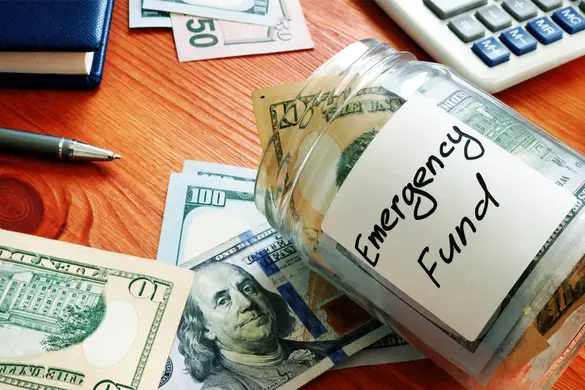
There are several steps to start and fund a financial emergency account. Of course, you never know when something could go wrong that will require a little extra cash. Though you have a few bucks to depend on from your paycheck, emergencies can often incur higher expenses. One of the best defenses you have against financial emergency is planning. For instance, saving up for an emergency situation gives you a cushion you can fall back on should life throw you for a loop. An emergency account has saved many of people in the past when they need money today, and it can save you if you simply know where to start. As a financially-conscious individual, you need to know how to start saving properly. Read on to discover several guidelines to start and fund a financial emergency account.
Getting Started With An Financial Emergency Account
When getting started with a financial emergency account, there are a few things that you should consider. These include how are you going to fund the account, where you have this account being held, and goals of the account. Below is some detailed information that should help you find answers for these questions you might have about getting started with a financial emergency account, and how one can help you be prepared for any life surprises that require an emergency fund.
Shop Around
Finding a higher yielding interest generating savings account is one of your best options when looking around for a place to save emergency money. This is because you always want to be using money you have to generate more money. Start by shopping around for the best interest rates on a savings account. You want a bank that has low deposit amounts, high-interest rates, and minimal fees.
Set A Goal
There are all kinds of debates on how much a person should keep in their emergency savings account. Some say $1,000 while others say it should be at least three to six month of your income. Set realistic financial goals for yourself so that you don’t get discouraged. Perhaps start with $500 and work your way up.
Check The Budget
How much can you afford to put into an emergency savings account? You’ll need to review your budget to see how much excess cash you have. For example, you can use a calculation tool to identify which expenses you can cut. This will not only help with this but all facets of your financial life. If you don’t have any room to spare, you’ll need to look for ways to boost your income or start cutting back on your entertainment expenses. If you do have enough, determine how much you’ll commit to putting in an account on a weekly, bi-weekly, or monthly basis.
Increase Your Income
If you’re having a hard time finding a way to save for an emergency, then increasing your income is recommended. Having more than one income stream can help boost your savings quickly. You can try passive income options like affiliate marketing or you might prefer to find a freelance gig to bring in regular income.
Pay Down Debts
A big part of why families aren’t able to save is because they are currently dealing with too much debt. If you can’t save just yet, at least start chipping away at your debt to increase the amount of excess money you have to put away.
There’s Nothing Wrong With Backup
Before discussing how to start and fund your emergency account let’s talk about having a backup. Since you don’t have any funds stored away at the moment, should something happen that requires instant cash, you need to know where to turn.
Having a credit card is a great backup source to your financial emergency account, and is a great safety net should additional money be needed during a financial emergency. If you don’t already have a credit card because of poor credit, you should check out this free do it yourself credit repair kit online for help.
Abusing assets by taking out a retirement loan comes with high consequences and, therefore, should be avoided at all costs. Instead, you can apply for emergency tax refund cash advance loans. Whether you have good or bad credit, you will have an emergency backup that can help you during a financial problem as a last resort when you have no other options available to you. This gives you time to handle the problem and start building your savings and working on your long-term financial plan. Consider the points mentioned above to learn about the most important guidelines to start and fund a financial emergency account.
 Business First Family Business, Accounting, Finance, Investing, Marketing And Management
Business First Family Business, Accounting, Finance, Investing, Marketing And Management